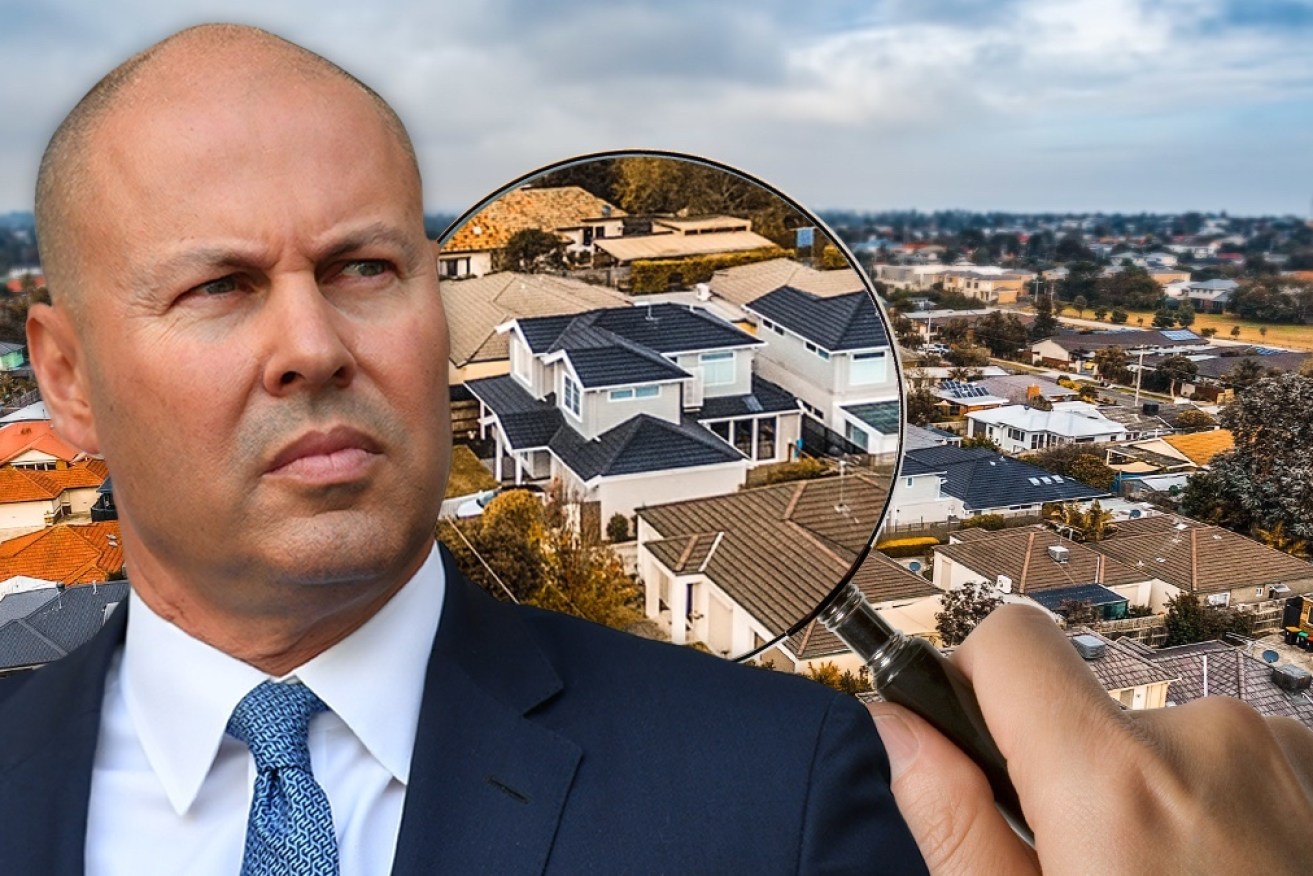Government bungles budget day two under tough inquisition


Mr Frydenberg pleaded with Australian families to take faith in the budget’s measures providing “real relief to Australian families at a time when they need it most”. Photo: TND
The day after a pre-election budget is handed down is invariably one of the most important campaigning days of the year.
The day’s media appearances alone can be a rare chance for politicians and treasurers to parry away lines of cross-examination about a document spanning reams of paper and to which their interviewers have only had access for 24 hours.
But it was not to be on Wednesday. Neither Prime Minister Scott Morrison nor Treasurer Josh Frydenberg left a defensive posture all day.
And in among the expected specifics on expenditure measures were searching inquiries on a philosophical level rarely seen when it comes to public discussion of government financial statements.
Was the failure of the budget to achieve its central strategic aim part of a cynical ruse of the worst kind? Did the government’s evident disregard for the principles of prudent financial management in assembling the document show that the Liberal party no longer has a reason for being?
Poor Mr Frydenberg faced this inquisition after addressing the National Press Club. Journalists had come prepared with statements he had made on financial matters previously so that they might be helpfully compared with the statements he was espousing today.
There was the undertaking to review public finances if unemployment should ever fall below 5 per cent (he was spruiking quarterly predictions of 3.75 per cent on Tuesday) and, who could forget, the virulent campaign ran against a previous Labor government on the grounds that it was amid a “debt emergency”, levels much lower than those in the budget the day before.
It is perhaps just a coincidence that Mr Morrison soon lost his appetite to fulfil a scheduled interview on the ABC’s 7.30 program.
Primary cost-of-living expense ignored
But even before introspection was required, the Prime Minister found himself having to defend its cost-of-living measures when they offered no relief for the components of household expenditure that had been hit hardest by inflation.
The costs of shelter and accommodation make up a significant proportion of Australians’ household expenditure – but research shows this holds especially true the lower down the salary scale one descends. The problem has been exacerbated in the past two years when the price of rents during the pandemic have rocketed by close to 20 per cent.
Dr Cassandra Goldie, the chief executive of the Australian Council of Social Service, made the reasonable observation that any cost-of-living package that did not address most families’ primary living was far from complete.
Here Mr Morrison made a most unfortunate misstep. Overly keen, perhaps, to point to a doubling in a government scheme to make it easier for people to purchase homes with far less deposits, he appeared to forget that home ownership was simply out of reach for most Australians.

Scott Morrison seemed to forget that home ownership is out of reach for many Australians.
“The best way to support people renting a house is to help them buy a house,” Mr Morrison said on the Today show breakfast program, which must be one of the fastest and most complete cases of undermining messaging unity in recent political history.
The questions became harder as the day wore on and a focus on the long-vexed issue of wage growth again put the government’s budget claims under scrutiny.
Wage growth under control?
One of the many upbeat statements about the Australian economy included in this year’s budget preamble was that wages were on track to accelerate at the fastest pace in a decade, from 2.75 per cent this financial year to 3.25 per cent the next.
The figure was reported uncritically by at least one media outlet.
But the long since lethargic rates of growth in the wages of Australian workers and their vulnerability to being eaten up by rises in inflation has become one of Australia’s most important political issues.
And the Treasury department’s knack for making almost always exactly wrong predictions about wage growth led some to view these latest figures with scepticism. Even when these doubts were accounted for, the picture of wage growth presented over the next four years was decidedly mixed. Others questioned how confident the Treasury could have been in assuming inflation would stick to 3 per cent next year given the range of possible strategic threats on the horizon and statements about combatting inflation made by central bank officials around the world.
Apart from when the main source of household expenditure goes up, a decline in a family’s primary source of income (a drop which averaged more than $800 last year due to inflation) is another severe hit to living costs.
Tweet from @VCOSS
Mr Frydenberg was also grilled about why more money had not been devoted to paying down the debt when the recipients of the budget’s headline, one-off $1500 tax offset includes people on up to $125,000 a year.
Mr Frydenberg was putting money into the pockets of Australias whose savings, we had been told, have ballooned during the pandemic and pouring it over an economy that appeared at some risk of overheating.
Had he abandoned his previously stated commitments to prudent fiscal management and had the Liberal government, as one of the highest spending in Australian history, also abandoned its commitment to economic conservatism?
Mr Frydenberg played a straight bat.
He pleaded with Australian families to remain strong throughout economic disruptions from overseas and take faith in the budget’s measures providing “real relief to Australian families at a time when they need it most”.
To explain the seeming disconnect between Mr Frydenberg’s restatements of the importance of cost-of-living with the seeming gaps in his plans to address it, we asked Brendan Coates, the head of the Economic Policy Program at the Grattan Institute to outline what was practically and politically possible in such a budget package.
“Forecasting is particularly hard right now,” he said of wage forecasts.
And while the government could draw confidence from an improvement in the domestic labour market, international signals were discouraging.
That ultimately was a secondary issue, Mr Coates said because the details of the government’s own forecasts revealed it would not be until June 2025 that family wages returned to June 2021 levels.
“They’re forecasting enough growth for households to stand still given the increase in prices.”
As for the cost-of-living proposals he noted direct payments had a degree of deficiency but agreed that affordable housing had been conspicuous by its absence.
“What are the greatest cost of living pressures and those that are doing it hardest?” he said.
“Low-income renters. We’ve seen rental stress rise amongst low income renters over a sustained period over the last 20 years. We can say that the number one thing you should be doing if you’re trying to deal with cost of living is [to address] rents.”
But when asked why helping low-income renters was not among the government’s priorities, he declined to speculate, but did note that no such initiatives had been ever offered as part of the massive $314 billion in direct government economic aid provided during the pandemic.








